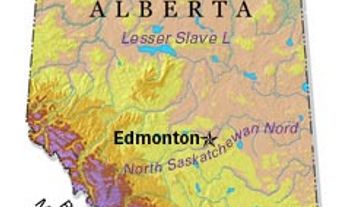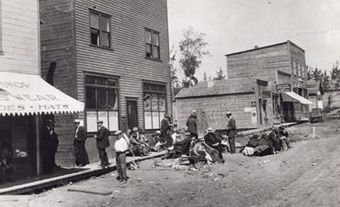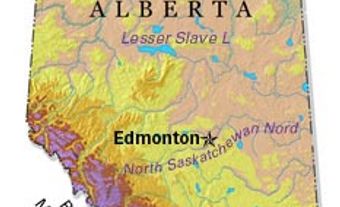High Prairie, Alta, incorporated as a village in 1945 and as a town in 1950, population 2600 (2011c), 2785 (2006c). Located on the south edge of the Peace River region, the Town of High Prairie is 365 km northwest of Edmonton and 200 km northeast of Grande Prairie. The PEACE RIVER Country was the last area of Canada to be opened for large-scale HOMESTEADING. Many homesteaders arrived after 1909, well in advance of a railway to ship their crops out.
Much of the early history of town development in the Peace River region is linked to speculation on railway routes. The Edmonton, Dunvegan and British Columbia Railway (ED&BC) constructed a line to GRANDE PRAIRIE between 1912 and 1916, and the company's choice of route was crucial to the development of High Prairie. Up to 1913 the largest centre on the southern edge of the Peace River Country was GROUARD at the western end of Lesser Slave Lake. The ED&BC railway chose not to build its line to Grouard, however, and High Prairie was developed instead as a railway town and the main stopover between Edmonton and the rest of the region.
In recent years High Prairie has grown as an administrative centre and it has experienced something of a boom resulting from expanded oil and natural gas development and lumbering in the area.

 Share on Facebook
Share on Facebook Share on X
Share on X Share by Email
Share by Email Share on Google Classroom
Share on Google Classroom


